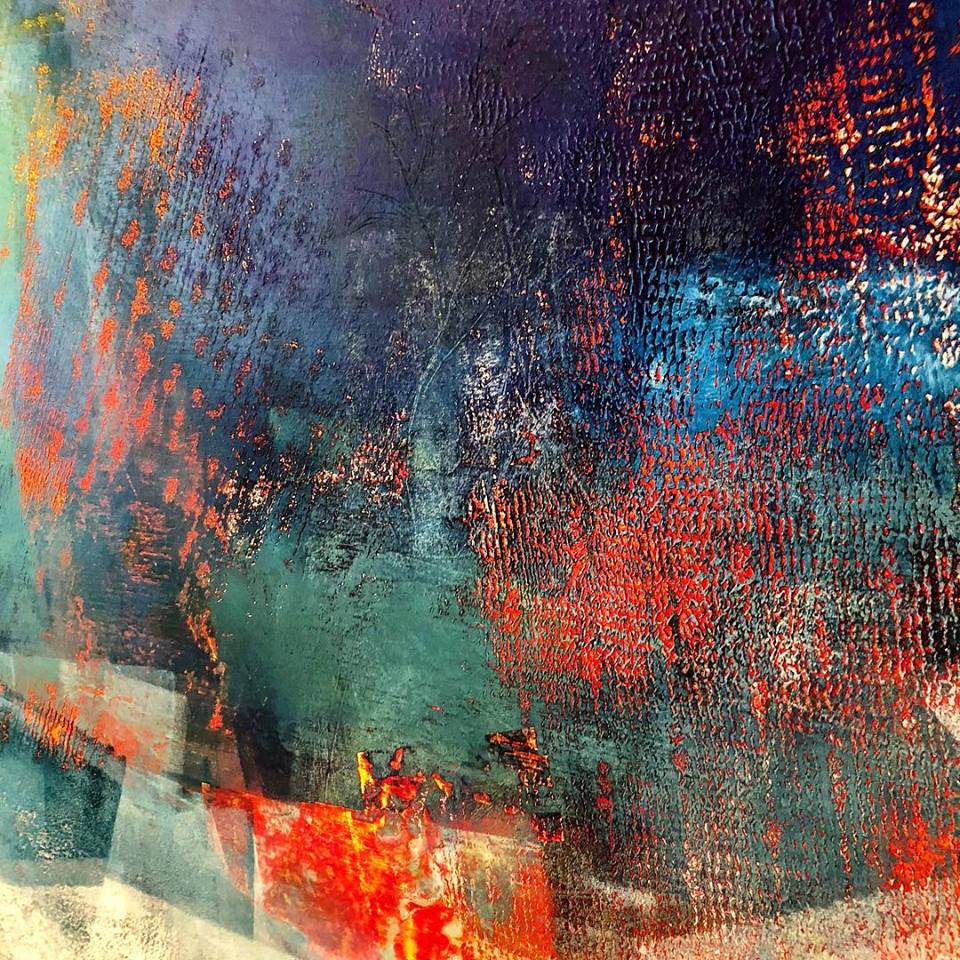Gesso
Not the most exciting artist topic at first glance. But I am pretty excited about gesso these days. Especially after realizing the wide range of gesso products and figuring out how to use them in a manner that enriches my paintings in a meaningful way. Gesso is a layer of paint that literally comes between the surface you are painting on and your painting technique of choice. While painting with oil or oil and wax it ensures that the painting can adhere to the surface and that compounds in the wood don't come through and distort the painted surface.
For years, I just used regular gesso when necessary. Always, using the higher quality brands as they seem to off-gas (smell) a lot less and also because they require fewer layers, so more expensive turned out to be more reasonably priced. However, I always found that getting the ultra smooth surface I wanted to work with was so difficult to obtain.
It was a very happy coincidence that I discovered Sandable hard gesso. (Golden). This product is only recommended for rigid surfaces. Diluting it with a bit of water, (only add water to what you are using that day) and applying several thin layers is the way to go. I used to recommend sanding between every layer, but with this, it really isn't necessary. This is specifically what I do...
STEP-BY-STEP
1. Wipe down the wood panel with a slightly damp paper towel, and give the wood a very light sanding. Sometimes the edges are somewhat raw and require a better sanding. I try to test the surface with a paper towel. Every time I've tried this with my fingers, I get so many splinters! With another paper towel, wipe off all the little bits.
2. Apply a thin layers of the sandable hard gesso, I find "good quality" foam brushes to be the ideal tool. Even on larger panels. It takes a while, but gives the best results. I tried the small foam rollers and found that it resulted in much more labour intensive. Do this twice. Two solid layers, but remember, these layers are thin.
3. Now try sanding. I have never had such an easy time sanding as with this gesso. It took seconds and the surface became so beautifully smooth. I used a fine sandpaper.
4. Take a look at your surface. Are there some areas that don't seem to have an opaque layer? I would add a thin third layer if that's the case, finishing off with a final sanding. I know this is a four-step process, but trust me when I tell you, this is the easiest way to go. I really like how the paint responds to this material. It is slightly absorbent but doesn't suck up unnecessary quantities of paint.
CREATING TEXTURE
If a super smooth beginning is not your ideal and you want to begin with a richly textured surface then consider using Super Heavy Gesso by Liquitex. It is buildable and responds well to imprinting and texturizing. You can certainly use a molding paste after the fact (and is recommended if you want to sand the surface) but why gesso then add another product when one product does everything.
The texture shown above was the result of pressing fabric into the gesso and applying smoother albeit thick areas with a spatula. All with super heavy gesso. I chose to apply oil paint on top of it, however, ACRYLIC paint can also be mixed into the gesso. Sometimes it can be useful to build a cold wax or oil painting on top of an acrylic painting. However, acrylic paints aren't always absorbent enough which may make it difficult for the oil and/or wax to adhere. But if paint is added to this gesso and a surface built up in this way, it would be a wonderful surface for adding cold wax and oil.
Below you can see the result of applying layer upon layer over the Super Heavy Gesso.
The organic and complex results that emerge simply from the application of Super Heavy Gesso are so exciting!
Hope you found this helpful. Please let me know your thoughts, or if you have any questions. I'm planning on sharing a tool I use in my next post. If you want to make sure that you don't miss a blog post, please send me an email at info@sharonkirshart.com, with subject "Technique Email"





